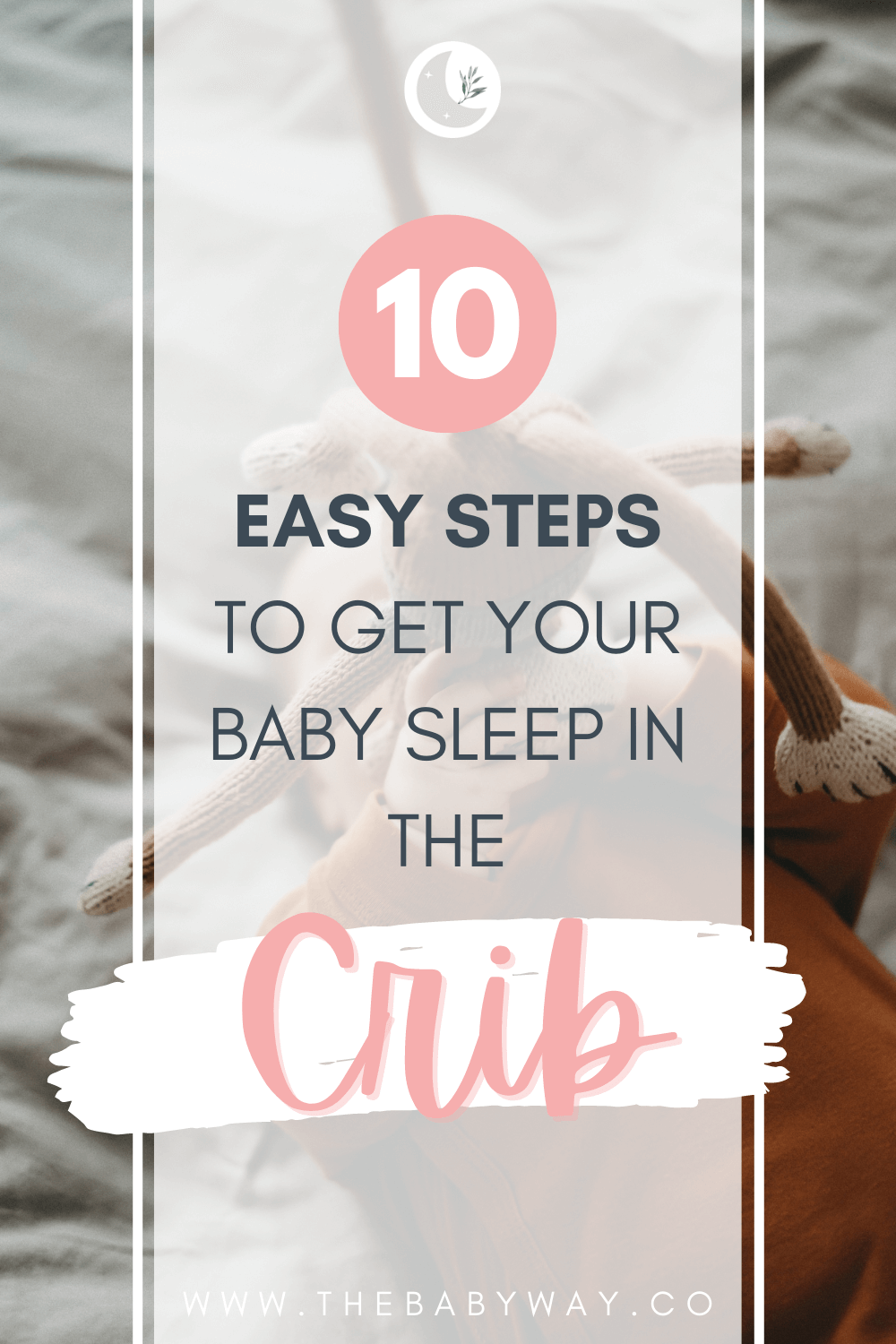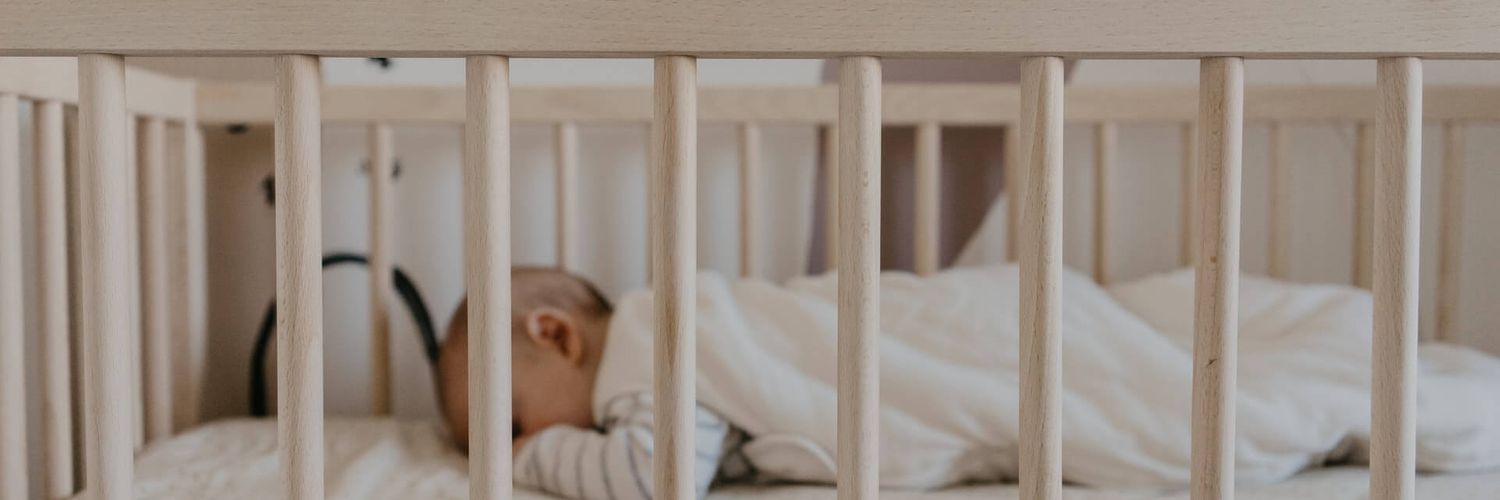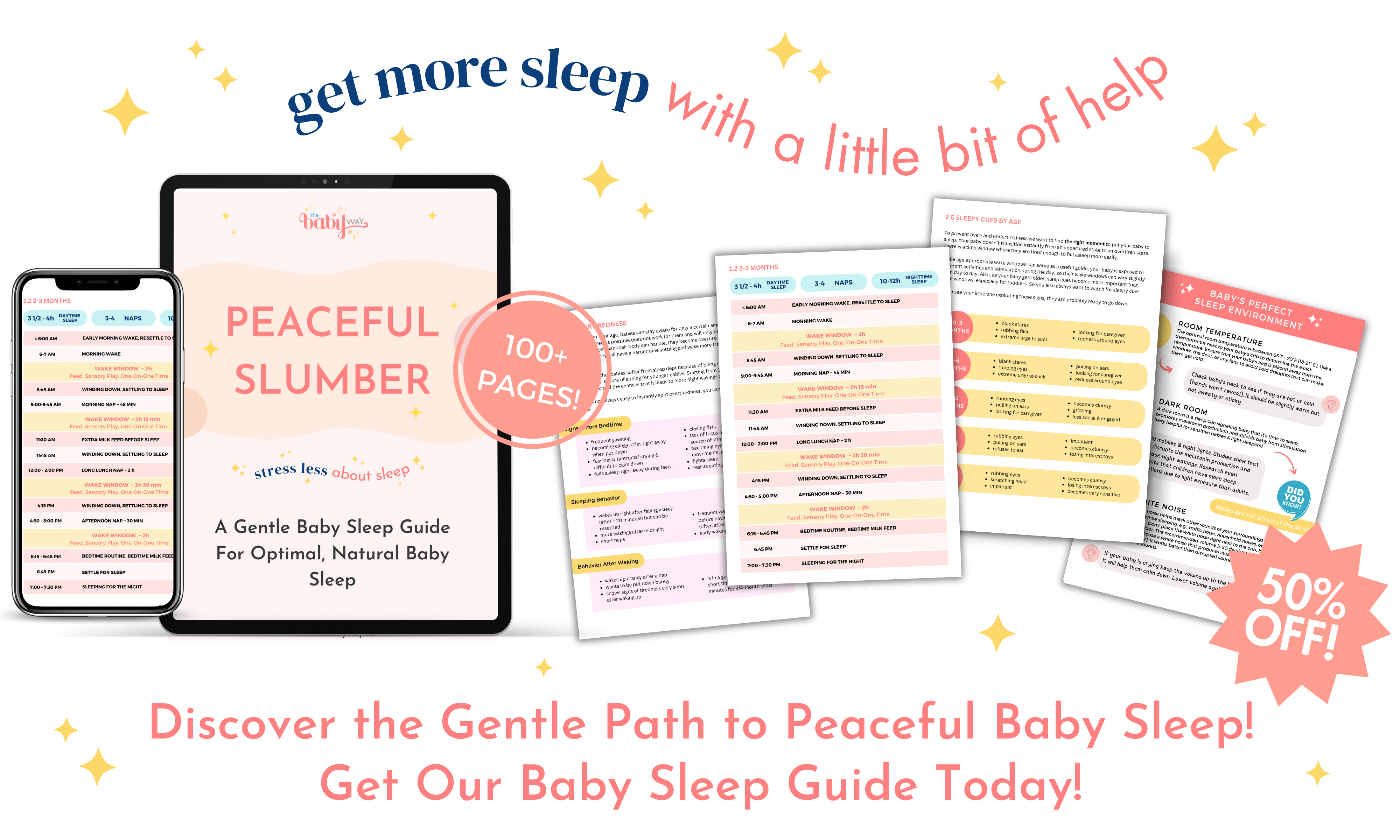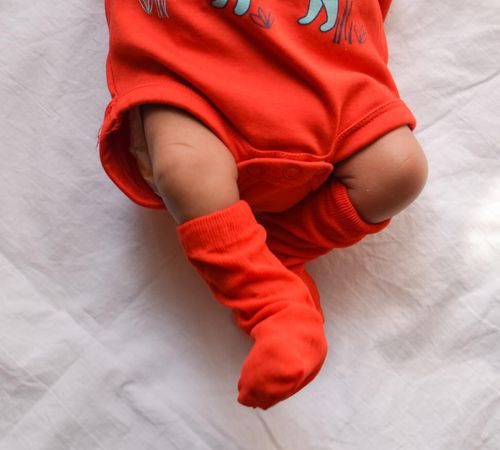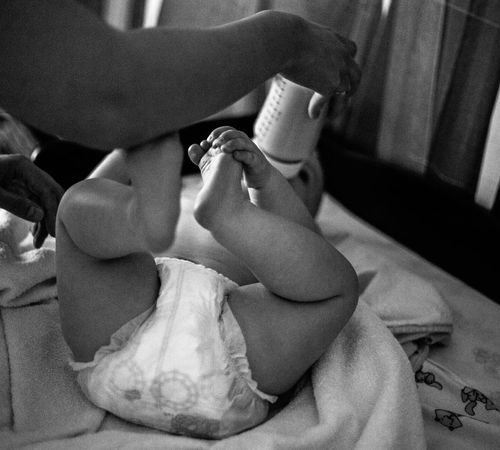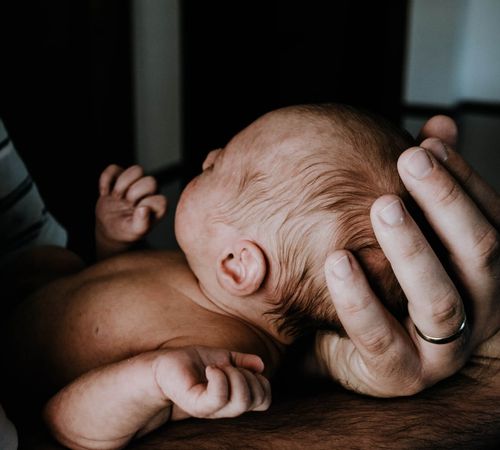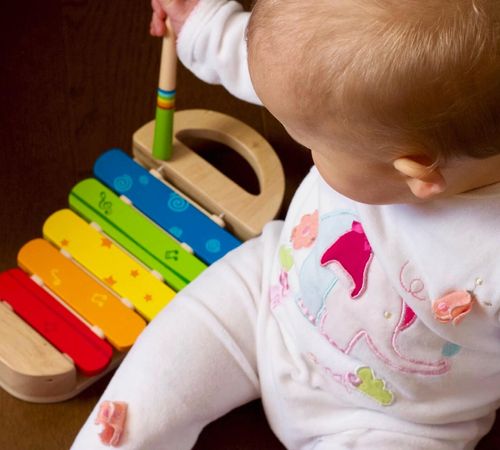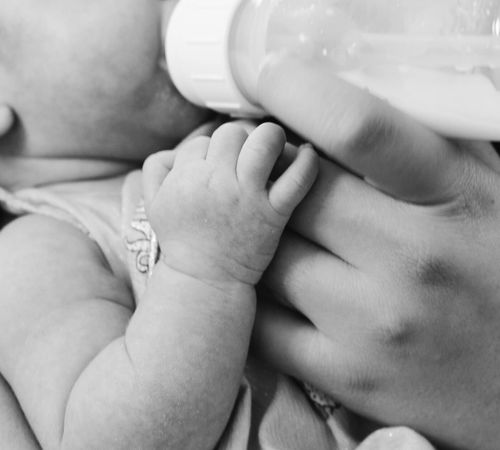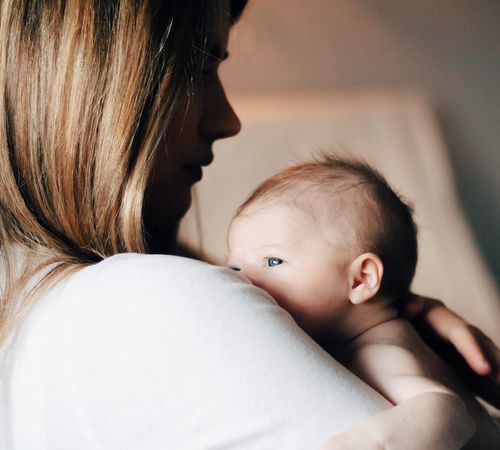Here are 10 steps to gradually transition your baby to the crib gently and stressfree
There are various reasons why you may want to get your baby or toddler used to sleeping in the crib. And whatever your reason is, it is valid.
My girl slept next to me in a bassinet for the first 6 months. Then, the bassinet became too small for her, so I transitioned her to a bigger crib (which today she uses as a big kid bed).
With my boy, I happily co-slept (safely) until he was about 11 months old. After that, it was no longer working for me, so I decided to get him used to the crib as well.
With my boy, the whole process took about 1-2 months until he only napped in the crib and slept there overnight, too. Today he loves his crib and doesn't want to sleep anywhere else.
A few days ago, my husband was on a business trip, and I decided to co-sleep with both my children (4 and 2 years). Both wake up on rare occasions, and since I was alone, I figured it was just easier to all share the big bed. Unfortunately, my little boy had no interest in sleeping in our bed. He repeatedly asked for his bed, so we all moved into his room. And my big girl and I ended up sleeping on our mattresses on the floor while the little man slept in his bed.
Understand that it takes time
Transitioning baby to the crib doesn't have to be a hustle, and it's possible without sleep training your little one.
Before you start transitioning your baby to the crib, you should understand that getting your baby used to the crib is a process. I know we always want to see results fast. But you're dealing with a baby, not a robot.
Anything you want to do gently will take time. So please prepare mentally for that to reduce your anxiety about the whole transition process.
Sleeping in the crib needs to become a habit for the baby. And habits simply take time to acquire.
Think of it like this: How hard is it to start a habit of regularly working out? How hard is it to start a habit of eating healthy?
It's unbelievably hard!
Starting to sleep in the crib is like adapting a new habit. And just like a habit it takes time, dedication and consistency.
And the same goes for your baby and getting used to a new sleep space. The only difference is that you know how important it is to work out and eat healthily, and your baby doesn't have a clue what is going on or understands any of the reasons why they suddenly have to sleep in the crib.
It's absolutely valid to want your baby to sleep in the crib. I got mine used to it when I was done with co-sleeping.
I just want you to truly understand that it takes time until your baby accepts and sleeps well in the crib.
Ok, so are you ready to give the crib a try? Then, let's go!
Before using the crib, always ensure it's a safe sleep space (firm crib mattress, fitted crib sheet, check pillows & stuffed animals according to age).
TIP #1: Introduce the crib as a happy place
I know that many sleep specialists say that the crib should only be for sleeping, but, unpopular opinion, I disagree.
We always used the crib as a place to play, too. And my kids loved the crib to play and to sleep.
Let the crib be a happy place.
You don't need to worry that your baby will get confused. If it's time to sleep, your little one will know through other signals such as a dark room and the sound of white noise that it's time to sleep.
To first introduce your baby to the crib, I suggest putting them in the crib with some toys (depending on age) when they are content and happy. Give them the opportunity to play in there and create happy associations with the crib. Peek-a-boo games were always a hit with us!
Once they start to fuss, you should always take them out. Do this for a couple of days. It's a great warm-up for what's about to come.
TIP#2: Introduce sleep-inducing elements
The crib will not be the only signal for your baby that it's time to sleep. You can use other powerful elements as well.
So before you get your baby used to the crib, get them used to other passive sleep associations. For example, a dark sleeping environment, white noise, and a sleep sack are very strong sleep associations that can help your baby calm down for sleep.
Use these sleep associations for at least a week before putting your baby to sleep in the crib, so they have enough time to get used to them.
Once your baby is supposed to sleep in their crib, these sleep associations will help them further fall and stay asleep in the crib.
TIP #3: Start with one daytime nap
I always wanted to get my kids used to the crib during the day first. Because whenever a nap wasn't happening, I still had a whole day to get back in the lost sleep. Also, at night, my patience is much lower and my need for sleep much higher.
I would let my baby have their first nap of the day in the crib. If your baby is still having a morning nap, try to get them to sleep in the crib. The morning nap is usually relatively easy to achieve as sleep pressure is still high.
Now, I am talking about letting your baby sleep in the crib. I am not talking about letting your baby fall asleep in the crib. Those are two completely different things. You can support your baby to sleep and then put them in the crib. That's absolutely no problem.
It might take a few attempts until your baby continues to sleep there. Just keep on trying. And if the nap isn't happening, then don't obsess. Take a break and get your baby to sleep the usual way. Just try again the next day.
TIP #4: Add an active sleep association
Ok, if I didn't get you to stop reading, I may now because another unpopular opinion is coming in: add a new active sleep association.
Wait, what?
Isn't like any sleep consultant advising mothers not to use active sleep associations? Probably. But I find that adding a new sleep association can really help your baby get used to the crib much smoother.
I am not talking about rocking or nursing your baby to sleep. I am talking about patting their bum, stroking, or shushing. You can use all of these while your baby is in the crib and help them fall asleep there. They are also quite easy to stop.
So before you let your baby fall asleep in the crib, include these sleep associations in your usual way of helping them fall asleep, e.g., patting while nursing or rocking.
Tip #5: Consider having the crib in your bedroom
Moving your baby into their own room and having them sleep in the crib can sometimes be overwhelming for both baby and parents. So you might consider having the crib in your bedroom first.
For one, if your baby should wake more often due to the new bed, you will not have to get up and go to their nursery. You might be able just to stick your hand through the bars and pat them back to sleep.
Secondly, your baby might sleep better in the crib when they sense that you are still around. And believe me, they do SENSE IT.
And lastly, it can also give you peace of mind. I mean, let's be honest. Our sleep will probably never be the same as it was. And we do wake up to check on our babies. So having your baby sleep next to you may make the transition also easier for you.
Tip #6: Stay consistent and patient
As I said before, the transition to the crib is a process, so don't expect your baby to sleep through the night the very first day.
But what will definitely help you is to stay consistent. It's very easy to fall back to old patterns because your baby might not be responding the way you had hoped for. Maybe they wake up more often since they sleep in the crib, or maybe falling asleep takes much more time.
I know that it can be challenging, but you should take it day by day and stay consistent if you want your baby to get used to the crib. Whatever we do in life, consistency is key to success.
Tip #7: Plan more time for falling sleep
Babies will sometimes take more time to fall asleep in the crib. It's absolutely normal. Rocking a baby to sleep or nursing to sleep are very effective ways to help your baby doze off.
And when you put your baby into the crib, they don't know what is happening. They might need longer to wind down.
Give them the time they need, and don't get stressed. Taking 20 minutes to fall asleep is very normal. Everything under 15 minutes is quite fast, actually.
So better start 20-30 minutes earlier with your bedtime routine when your baby is learning to fall asleep in the crib. Otherwise, you risk them getting overtired, and then they will have an even harder time falling asleep.
Tip #8: Make it comfortable for yourself
If you plan on staying in the room with your baby until they fall asleep or if you choose to help them fall asleep by patting or shushing, make sure you are comfortable as well. Bending over the crib is very stressful and will do no favor to your back.
Put some pillows on the floor next to the crib so you can sit down. Maybe you even have a mattress. And then you can sit or lay down yourself and use it as a time to rest your body.
Don't look at the clock, and don't overthink why your baby still has not fallen asleep. Remember, you can use this time also to wind down and collect some positive thoughts (for example, you can think about all the things you are grateful for).
Tip #9: Take turns with your partner
Now, transitioning to the crib can be a longer process. So I always advise parents to take turns with their partner when it comes to bedtime (actually in general and not only when you transition baby to the crib).
Every parent can then get a break every other day and recharge (mentally and physically) for the next night.
Parenting is a shared responsibility. And bedtime is part of that.
Sometimes it also helps the baby if you switch parents. Have you ever tried switching when your baby was upset? They suddenly stop crying.
So even if your partner has never taken over bedtime, this can be a good moment to start. It will also give them an opportunity to bond with your child during a very important part of the day, which is separating from the caregiver.
Tip #10: Always comfort your baby if they are crying
When you start the transition process, it is possible that your baby might protest less or more. It all depends on how fast you're going, your baby's temperament, and how the sleeping situation was before.
But I want to encourage you always to comfort your baby if they are fuzzing or crying. They need you through this process.
Never ever feel bad for comforting your baby. Don't think about bad habits or spoiling them. These things don't exist.
If your baby is crying, you can pick them up and comfort them in your arms. Then try placing them back. You can also try to comfort them while they are in the crib. You know your baby best. You can differentiate their cries. Helping your baby through this is not the same as letting your baby cry it out alone. On the contrary, you are supporting your baby's emotions.
But whenever you feel overwhelmed, don't be afraid to take a break. You will get there, believe me. Keep those positive thoughts in your mind.
Remember, tomorrow is another day full of chances.
